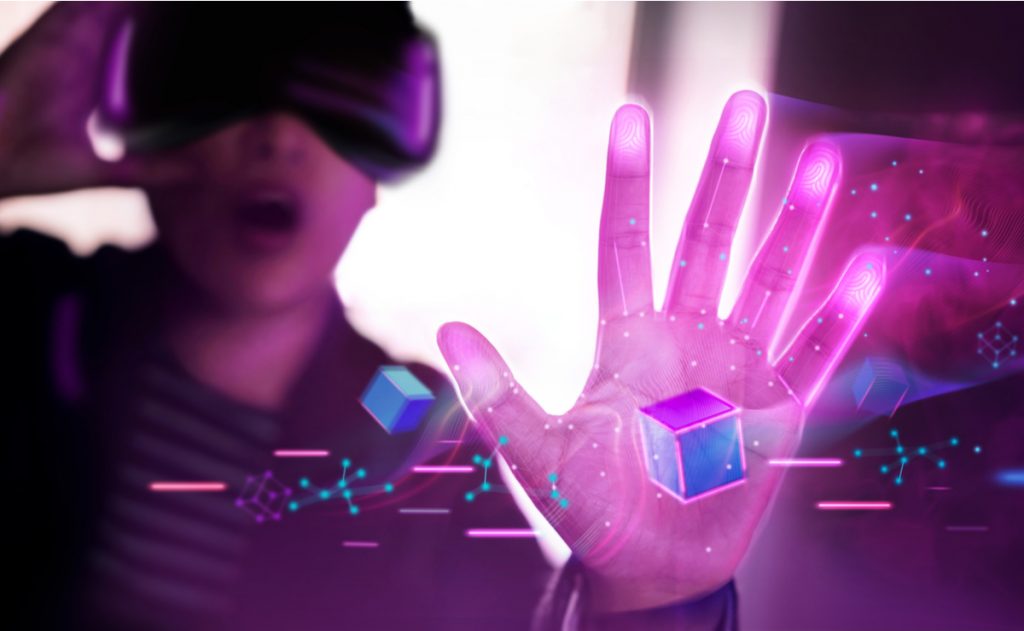The two terms – Metaverse and Web 3.0 has taken over the Internet today. Almost all the tech giants are working toward it and trying to bring the most out of it.
Recently, both topics have received a lot of attention and are expected to have a lasting impact on the future of the technology world. Both the terms refer to the decentralized future of the Internet and the social sphere.
With the evolution of technologies, many questions arise, like what technology trend will shape the future Internet? Accessing the Internet will be more convenient through Metaverse or Web 3.0? And many such questions have been raised currently as tech giants are planning to enter the Metaverse with their newly designed applications.
Many often confuse these terms with each other. Therefore, understanding and distinguishing between them has become an essential step.
What is Metaverse?
Since the last news about Mark Zuckerberg re-naming Facebook as Meta, the term Metaverse has made a buzz around the town. The term ‘Metaverse’ was first established in the 1992 sci-fi novel “Snow Crash” – is more of a vision than a concrete reality.
Since then, Metaverse has had multiple definitions. In simplest of terms, it can be described as a virtual reality or computer-generated environment that allows users to interact through avatars, sounds, text messages, music videos, video games, etc.
Metaverse is a combination of the web, Augmented Reality (AR), and the blockchain. Due to its wide range of connectivity types, devices, and technologies, Metaverse will allow people to experience the Internet on various devices, including commonplace screens and cell phones, to Virtual Reality (VR) and AR. Additionally, the Metaverse will enable users to play games, shop, trade, chat, work or even attend concerts—all in the virtual world.
So basically, Metaverse is bridging the gap between the offline and digital worlds, which makes it most exciting.
What is Web 3.0?
Being a technical term, Web 3.0 again has multiple definitions. It can be defined as a digital space where content is produced, shared, and formalized. In Web 3.0, user interaction is made possible using Artificial Intelligence (AI) and Machine Learning (ML) technology.
Web 3.0 is the third-generation of the Internet that collects decentralized data to deliver a faster and more personalized user experience. It makes use of a blockchain security system to keep user information safe and secure.
Web 3.0 is also identified as semantic web and is an extended version of Web 2.0.
This semantic web has enabled people to control their data and transit from social media to email to shopping through personalized accounts. This builds a public record of all their activities on the blockchain
Web 3.0 holds three main characteristics – decentralization, openness, and incredible user utility.
Moreover, the third-generation technology lets websites and applications use data more meaningfully and efficiently exchange information with other users. Web 3.0 gives users a personalized experience like communicating with other humans while interacting with machines and websites.
Differences between Metaverse and Web 3.0
- Definitions –
The Metaverse is a virtual reality space that can interact with three-dimensional objects. Here, virtual reality goggles are used to interact with other users and virtual items in the Metaverse.
Web 3.0 represents a significant advancement in managing digital assets and online identities. It makes possible for users to produce, own, and monetize their content. As a result, Web 3.0 is looked upon as a vision for the Internet’s future generation, such as NFT’s, in which users are incharge of their inventions.
- Underlying technology –
The underlying technology in both is the next important component. Metaverse is a mix of different technologies. Building a Metaverse involves interfaces, connection, decentralization, experiences, a creator economy, and supporting technology.
Web 3.0 was responsible for developing a decentralized web-based technology that works on blockchain and cryptocurrency. Users can interact within online services using blockchain, governed by a decentralized network of computers. Additionally, Web 3.0 can use public blockchain functionality to provide open, permissionless access to anybody with an Internet connection.
- Usability
Metaverse as a virtual environment includes movies, gaming, entertainment, education, simulation-based training, and social networks. Metaverse applications such as Mesh from Microsoft are still under process and need to be worked upon. As a result, predicting that the Metaverse will reflect practically on all real-world activities will be too early.
Web 3.0, the advanced version of the Internet, works on rules that apply to everyone who uses the Internet. As a result, Web 3.0 is applicable throughout the web rather than just specialized apps.
- Structure
Metaverse is a futuristic period in which computer-assisted technology lets humans enter the digital world. It is a hybrid of actual and virtual worlds that includes technologies like VR and AR.
Being the next version of Web 2.0, Web 3.0 allows all online activities to be performed on it. It is something that will always remain forever and has proven to have an existence of its own.
Similarities
- While talking in the technical sense, many of the advancements that happened with blockchain create the same common ground for both terms. Every new blockchain method and solution is evaluated as a potential module for integrating it into Web 3.0 to empower Metaverse goods and services.
- Metaverse and Web 3.0 are inseparable. The initial one exists in the surface and deep webs, while the latter often follows the decentralization process. Metaverse remains centralized when it comes to social media controlling platforms.
- Both the technologies are a major part of the Internet, which is open, trustless, and permissionless networks allowing free access to the virtual world. Being decentralized technologies, it is open to the entire public.
- Both the advanced technologies will continue to grow with time as they will work using AIand function on an advanced user interface.
- The two technologies focus on next-generation Internet technologies and are more inclined to transform the way people communicate online. They assist consumers while entering the digital environment using Internet-of-Things (IoT) devices.
- These technologies (Metaverse and Web 3.0) work on HTTP 2.0 and are efficient in widespread user acceptability. They are the most up-to-date technologies that fall under distributed computing.
Final take
It is visible that Web 3.0 and Metaverse complement each other as they support each other perfectly. Metaverse is a digital space, while web 3.0 falls more under a decentralized web, which could form as the basis for connectivity in the Metaverse.
Metaverse will carve the future, and Web 3.0 marks some potential changes for the same. Furthermore, Web 3.0 will be seen earlier and lay the foundations for the Metaverse.
In short, both are cutting-edge technology that will evolve. The technologies will be utilizing AI and a sophisticated user interface. Both concentrate on upcoming internet technology and changing the way people share content online. Both technologies make it easy for individuals to enter the digital world via IoT.
Visit our latest whitepapers to read more about Metaverse or Web 3.0 and other related technologies.














